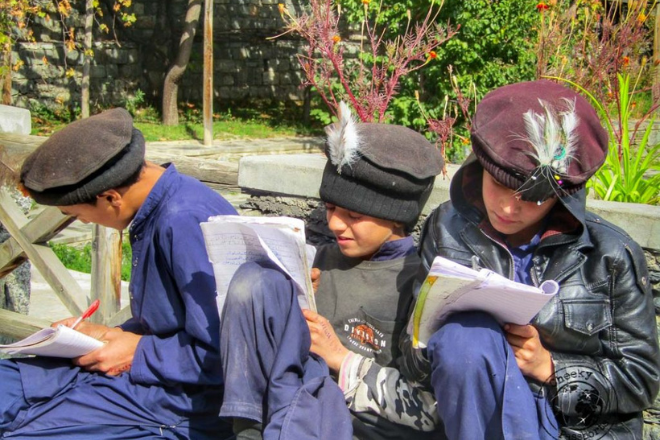
Kalash Valley, Pakistan, offers more than just a travel destination—it transforms into a profound emotional experience. Strolling through its terraced fields and observing the age-old customs of the Kalash community, visitors are captivated by the stunning Kalash Valley view, evoking a deep sense of wonder and admiration.
Kalash Valley, located in the Hindu Kush mountains 40 kilometers from Chitral at an elevation of 1,670 meters, is a hidden gem of Pakistan. This unique Kalash Valley location offers a distinct experience with its picturesque landscapes and ancient cultural practices.
The valley’s breathtaking views and vibrant traditions create an emotional journey for visitors, as the lively festivals and rich traditions of the Kalasha people forge a deep and meaningful connection with their enduring spirit.

The origins of the Kalash Valley people remain a mystery, with several theories attempting to explain their roots. One popular belief is that the Kalasha are descendants of Alexander the Great, left behind during his 3rd century BC expedition through the Hindu Kush.
Another theory suggests that Kalasha fled to Kalash Valley Chitral from Nuristan (formerly Kafiristan) in Afghanistan to escape forced conversion to Islam in the late 19th century.
A third theory links their ancestry to a distant South Asian land called Tsiam, often referenced in Kalasha folklore. Despite these differing accounts, the unique Kalash Valley history adds to the region’s cultural intrigue.
Kalash Valley people are deeply rooted in their ancient traditions and Kalash religion, setting them apart from the surrounding communities. Their customs, rituals, and lifestyle reflect a unique, vibrant culture that thrives despite external pressures.


The Kalash community is friendly and welcoming but values their privacy, so permission is required for photography or interviews. They speak the Kalasha language, a Dardic tongue classified by UNESCO as severely endangered, with only around 5,000 speakers.
Although the language lacks a formal script, recent efforts have been made to develop one, helping to preserve this unique linguistic heritage.
The Kalash Valley is home to a unique polytheistic belief system deeply rooted in animism and nature worship. The Kalasha people worship 12 gods and goddesses, with Dezau (Yama Raja or Khodai) as the supreme deity and Balumain as the cultural hero who introduced the winter festival. Other deities include Destak, Munjem, and Dezalik.
Nature plays a central role in the Kalash Valley religion, with spiritual significance attributed to mountains, rivers, and trees. Festivals like Chilam Joshi and Uchau celebrate the Gods’ blessings and ensure prosperity. Despite external influences, the Kalasha remain dedicated to preserving their ancient beliefs and unique traditions.
Every year Kalash Valley has three main festivals (Khawsangaw), which is an integral part of Kalash culture.

Also known as the Spring Festival, Chilam Joshi spans four days across the Kalash valleys. It begins with “Milk Day,” where milk is stored ten days before the event. The festival celebrates cultural diversity, peace, and societal cohesion.
 The Summer Festival marks the start of the harvest season. During Uchau, the Kalash honor their Gods for providing abundant crops and good fortune. The festival includes prayers on a high plateau, followed by lively dancing and celebrations that continue late into the night.
The Summer Festival marks the start of the harvest season. During Uchau, the Kalash honor their Gods for providing abundant crops and good fortune. The festival includes prayers on a high plateau, followed by lively dancing and celebrations that continue late into the night.

Also called “Choimus,” the Winter Festival signifies the community’s hopes for prosperity in the coming year. It features torchlit processions, dancing around bonfires, and purification rituals.
Kalash Valley consists of three primary villages:

The cemetery in Bumburet is a fascinating site. Traditionally, the Kalash people placed the deceased in wooden boxes left under the open sky, accompanied by personal belongings. The graveyard is filled with these boxes, and it’s not uncommon to see bones and pieces of cloth.

Located in Bumburet, the Kalasha Dur Museum showcases traditional Kalash artifacts and old photographs of the region. This museum offers valuable insights into the cultural heritage and history of the Kalash people, making it a worthwhile stop for anyone exploring the valley.

A visit to the local school in Bumburet provides a rewarding experience. The school, with its fresh wooden library and enthusiastic teacher, offers a glimpse into the educational environment of the valley. Children, dressed in local attire, are accustomed to interacting with visitors and reciting their lessons with confidence.
Kalash Valley temperature varies but is normally moderate.

Kalash Valley food reflects its rich cultural heritage, with traditional recipes featuring local ingredients like crops, fruits, and meats. The Kalash people are known for their unique bread varieties, flavorful soups, and distinctive meat dishes, as well as homemade liquors and wines.
Breads:
Soups:
Meat Dishes:
Other Dishes and Cheese:
City | Distance | Travel Time (by road) |
Chitral to Kalash Valley | 36 km | ~2 hours |
Islamabad | 406 km | ~9 hours |
Karachi | 1,772 km | ~1 day, 2 hours |
Lahore | 749 km | ~13 hours |
Peshawar | 368 km | ~9 hours |
Gilgit | 396 km | ~14 hours |
Accommodation options in Kalash Valley range from guesthouses to hotels, catering to various preferences and budgets. Staying in these local lodgings allows visitors to experience the hospitality and culture of the Kalash people.

Kalash Valley presents a unique combination of cultural richness, natural beauty, and adventurous opportunities. Its distinct weather patterns, fascinating history, and vibrant festivals make it an extraordinary destination for those seeking an immersive and memorable travel experience.
637, Street 34, DVs, Sector F, DHA Phase 1, Islamabad, Pakistan
info@guidetopakistan.pk
Phone : +92 3212224042